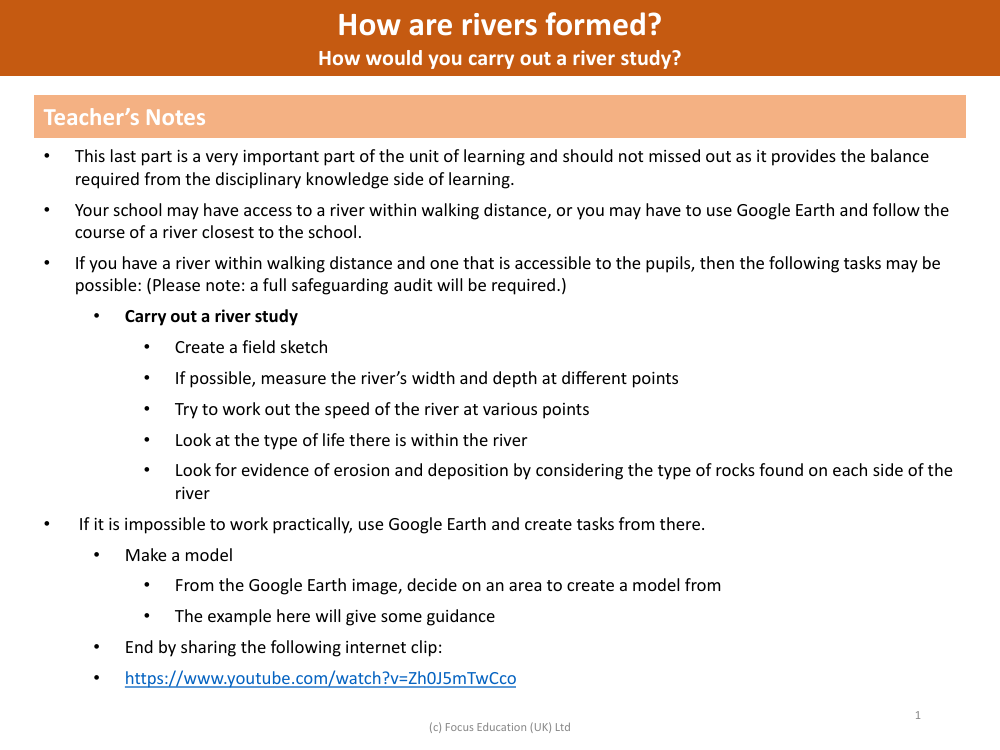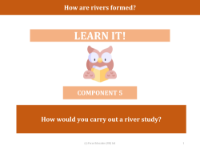How would you carry out a river study? - Teacher notes

Geography Resource Description
Conducting a river study is a critical component of the learning unit, as it provides a practical application of disciplinary knowledge. If a river is easily accessible from the school, students can engage in a variety of hands-on tasks, provided that a comprehensive safeguarding audit is completed to ensure their safety. During the study, students can create a detailed field sketch of the river, measure its width and depth at various points to understand its physical characteristics, and calculate the river's flow rate. Additionally, they can observe the biodiversity within the river and identify different species that inhabit the river ecosystem.
Another aspect of the river study involves examining geological processes such as erosion and deposition. Students can collect and analyze the types of rocks and sediments found along the riverbanks to gain insight into these natural phenomena. If a field trip is not feasible, technology such as Google Earth can be utilized to conduct a virtual river study. Students can use satellite imagery to explore the river's course and characteristics, and then create a model based on a selected area from the imagery. To supplement the study, teachers can share educational videos, such as the provided YouTube clip, to enhance students' understanding of how rivers are formed and the various factors that influence their development.


